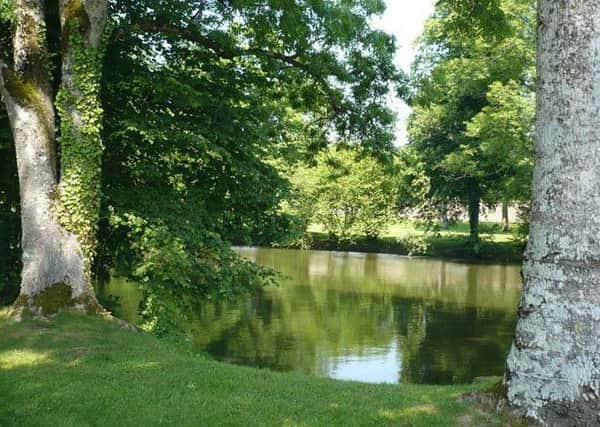Water '“ Monks saw it as an '˜indispensible resource'


The abbey they left at Tiron was still under construction. The site of Tiron abbey was a swamp and the first thing the monks did was build a dam across the river Thiron and drain the land for their abbey.
The dam created a lake which is still there today and a sluice was built to control water in a canal or lade designed to run past the abbey kitchens and latrines. Although the abbey is no longer standing, the lade is still there, running underground past the site of the abbey.
Advertisement
Hide AdAdvertisement
Hide AdA section from an information board at Thiron Abbey is significant.
“Une Resource Indispensable. L’eau conditionne l’implantation des monastères. C’est pourquoi de nombreux monastères se sont d’abord installés provisoirement afin d’apprécier les ressources hydrauliques locales et de réaliser les aménagéments nécessaires. L’insuffisance de cette ressource naturelle à parfois justifié le déplacement d’un monastère ou son abandon.”
Translated, it reads: “An Indispensable Resource. Water affects the implementation of the monasteries. This is why many monasteries were first provisionally installed to utilise local water resources and produce the necessary amenities. The inadequacy of this natural resource sometimes justified moving a monastery or abandonment.”
It seems very likely the ‘particular terra’ was provided to facilitate a lade or great drain to service Selkirk Abbey.
Advertisement
Hide AdAdvertisement
Hide AdThe cauld, necessary to build a head of water would have been built or planned to be built just above where the Shaw Burn would enter the Ettrick, well enough upstream from the important ford giving access to the Minchmoor Road.
The lade coming out of the Ettrick above the cauld would run down the east side of the Ettrick, fed by the Shaw Burn and continuing north picking up water from the Batts Burn and on to rejoin the Ettrick after servicing the Abbey.
Water cannot run uphill, so the course of the lade was dictated by the contours of the land. Some believe that the site of the Abbey was in the vicinity of Lindean Church, but as the Church lies on higher ground that rules this out.
An indication of where the lade would have been intended to run might be given by the existing line of the disused lade, down river from the lade system built in the 18th century, along with a cauld further up river to provide power for the Selkirk textile mills.
Advertisement
Hide AdAdvertisement
Hide AdThis lade began close to Bridgeheugh and then, fed by the Batts Burn, continued to Lindean Mill.
Significantly, Lindean and Lindean Mill were recorded at the time of the Reformation as being part of the rental of Kelso Abbey. There is still a mill building at Lindean, close to the Ettrick, which was serviced by the lade.
It is in the flat area, east of the lade and north of the Batts Burn, that we can look for the site of the intended Abbey. The usual format would be for the kitchens, latrines and dormitories to be built close to the lade or great drain, and then the Abbey nearby.
In the 1850s a railway was constructed, linking Selkirk to the main line at Galashiels.
Advertisement
Hide AdAdvertisement
Hide AdA raised embankment was built which was extended to accommodate the A7 road in the 1970s. These works may have been built over remains of preliminary works to create the Abbey.
● Next week, Frank concludes the series with a look at how the monks abandoned the building of the abbey in Selkirk and moved their efforts to Kelso.